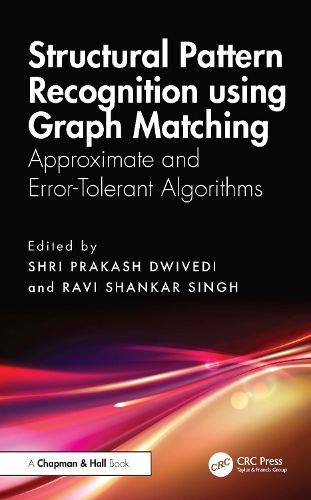Readings Newsletter
Become a Readings Member to make your shopping experience even easier.
Sign in or sign up for free!
You’re not far away from qualifying for FREE standard shipping within Australia
You’ve qualified for FREE standard shipping within Australia
The cart is loading…






This book presents a comprehensive exploration of structural pattern recognition with a clear understanding of graph representation and manipulation. It explains graph matching techniques, unearthing the core principles of graph similarity measures, subgraph isomorphism, and advanced algorithms tailored to various pattern recognition tasks. It bridges the gap between theory and application by providing case studies, hands-on examples and applications. It is a reference book for academicians, researchers and students working in the fields of structural pattern recognition, computer vision, artificial intelligence, and data science.
Begins with the fundamentals of graph theory, graph matching algorithms, and structural pattern recognition concepts and explains the principles, methodologies, and practical implementations
Presents relevant case studies and hands-on examples across chapters to guide making informed decisions by graph matching
Discusses various graph-matching algorithms, including exact and approximate methods, geometric methods, spectral techniques, graph kernels, and graph neural networks, including practical examples to illustrate the strengths and limitations of each approach
Showcases the versatility of graph matching in real-world applications, such as image analysis, biological molecule identification, object recognition, social network clustering, and recommendation systems
Describes deep learning models for graph matching, including graph convolutional networks (GCNs), and graph neural networks (GNNs)
$9.00 standard shipping within Australia
FREE standard shipping within Australia for orders over $100.00
Express & International shipping calculated at checkout
This book presents a comprehensive exploration of structural pattern recognition with a clear understanding of graph representation and manipulation. It explains graph matching techniques, unearthing the core principles of graph similarity measures, subgraph isomorphism, and advanced algorithms tailored to various pattern recognition tasks. It bridges the gap between theory and application by providing case studies, hands-on examples and applications. It is a reference book for academicians, researchers and students working in the fields of structural pattern recognition, computer vision, artificial intelligence, and data science.
Begins with the fundamentals of graph theory, graph matching algorithms, and structural pattern recognition concepts and explains the principles, methodologies, and practical implementations
Presents relevant case studies and hands-on examples across chapters to guide making informed decisions by graph matching
Discusses various graph-matching algorithms, including exact and approximate methods, geometric methods, spectral techniques, graph kernels, and graph neural networks, including practical examples to illustrate the strengths and limitations of each approach
Showcases the versatility of graph matching in real-world applications, such as image analysis, biological molecule identification, object recognition, social network clustering, and recommendation systems
Describes deep learning models for graph matching, including graph convolutional networks (GCNs), and graph neural networks (GNNs)